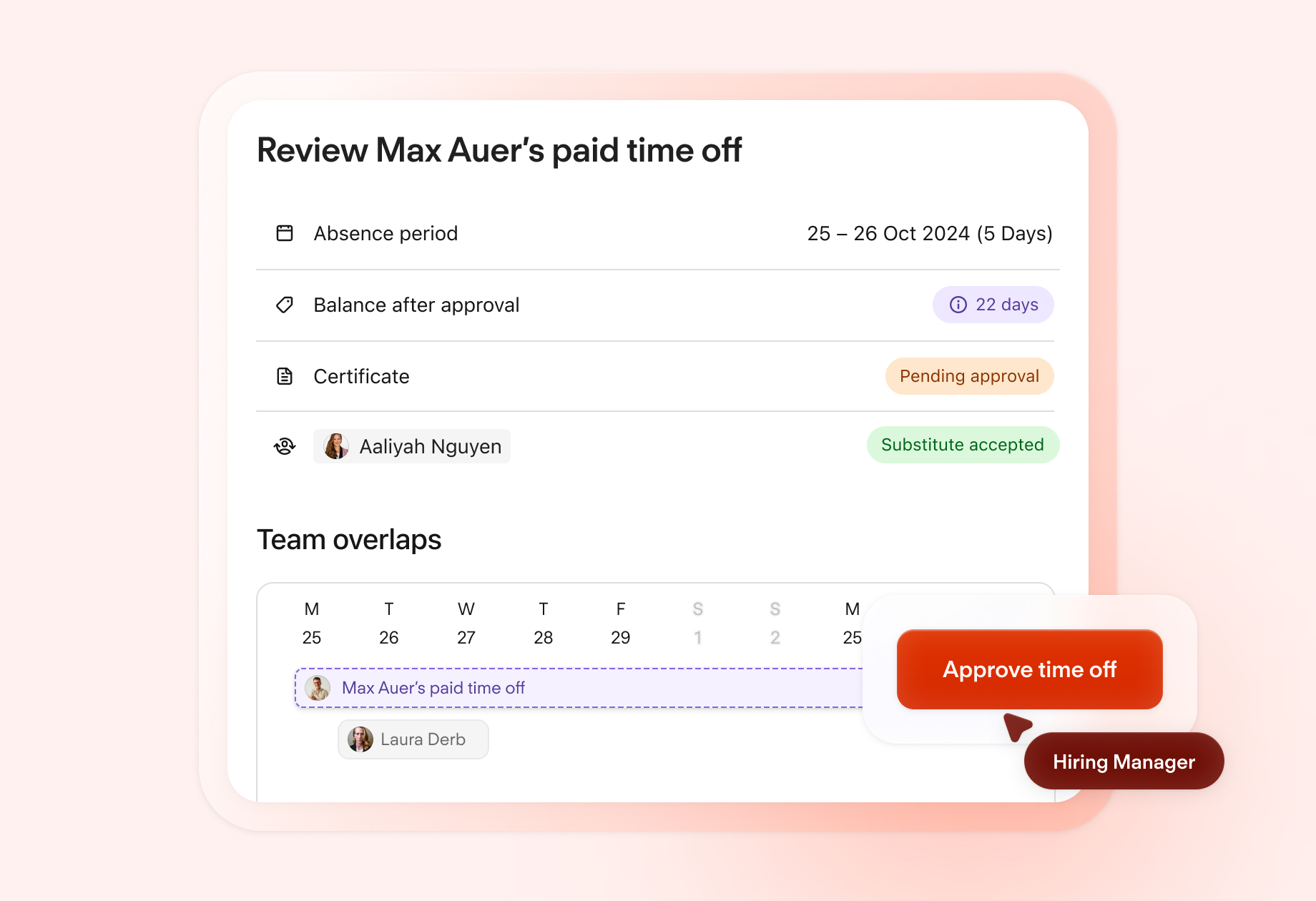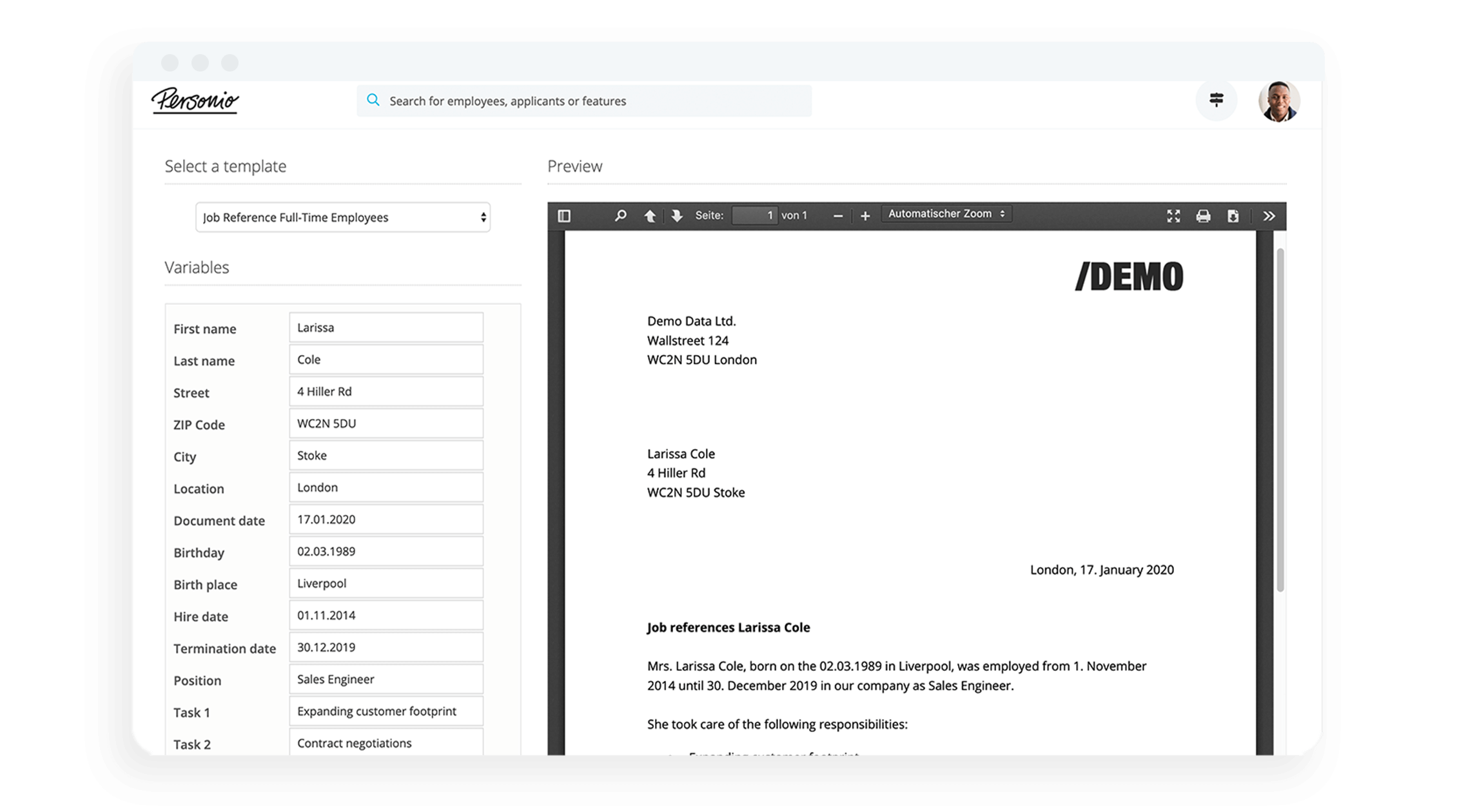Is sabbatical leave the right choice for your organisation?

Amongst the many types of leave and absence out there, sabbatical leave is one of the least common. That's why it can be difficult for organizations to prepare for it, and react to it when it happens. In this article, we offer a comprehensive guide to sabbatical leave, defining a policy for your organization, and how to keep track of every employee absence.
An overview of all your employee absences at once. Learn more about Personio.What is Sabbatical Leave?
Sabbatical leave is when an employee takes an extended break from work to focus on their passions. During this time, an employee remains employed by an organisation, but they are not expected to keep up with their work or go into an office at any point (except for in exceptional circumstances).
A sabbatical leave may be taken for a whole host of reasons and can be both paid or unpaid. In general, though, a sabbatical is generally understood as an opportunity to pursue some kind of personal passion, which might include:
Travelling
Studying
Volunteering
What is a Sabbatical Leave Policy?
As an organisational matter, a sabbatical leave policy outlines your company’s position toward sabbaticals and the rules governing them. This might include how an employee becomes eligible to take a sabbatical, the general conditions and structures in place and how you generally view sabbaticals.
Some companies have even taken to using sabbaticals as a benefit during the hiring process. Following an extended period of employment, they may offer the opportunity for an employee to take a sabbatical of some months to pursue their own passions. In these cases, companies can benefit from refreshed employees and reduced attrition rates.
Is Sabbatical Leave Growing In Popularity?
At one point in time, sabbaticals were mainly confined to the world of high-minded academic institutions. Professors would often take a sabbatical to pursue a new research interest. But, the concept is mainstreaming — and fast.
In recent years, the popularity surrounding the idea of sabbatical leave has taken a massive tick. Some have even proclaimed 2021 as ‘The Year of the Sabbatical.’ But, for employees and organizations alike, it begs the question: Why is sabbatical leave becoming so popular right now?
There are two reasons at play: Hybrid work and employee burnout. The rise in hybrid work and its potential effect on burnout, coupled with ‘The Great Resignation‘ has led to a distinct increase in the motivation of employees to consider sabbatical leave as a viable alternative.
That’s because employees have never felt more pressure at work, and have also found the lines between personal and professional live blurring beyond comprehension. The result is a desire to take a break, fueled by the confidence to take that break in a war for talent.
Can Sabbatical Leave Be A Good Thing?
For many organizations, the rise in sabbatical leave (or the interest in it) may sound like doom and gloom. But, let’s think about it another way: sabbatical leave may be an incredibly valuable lever for employee retention.
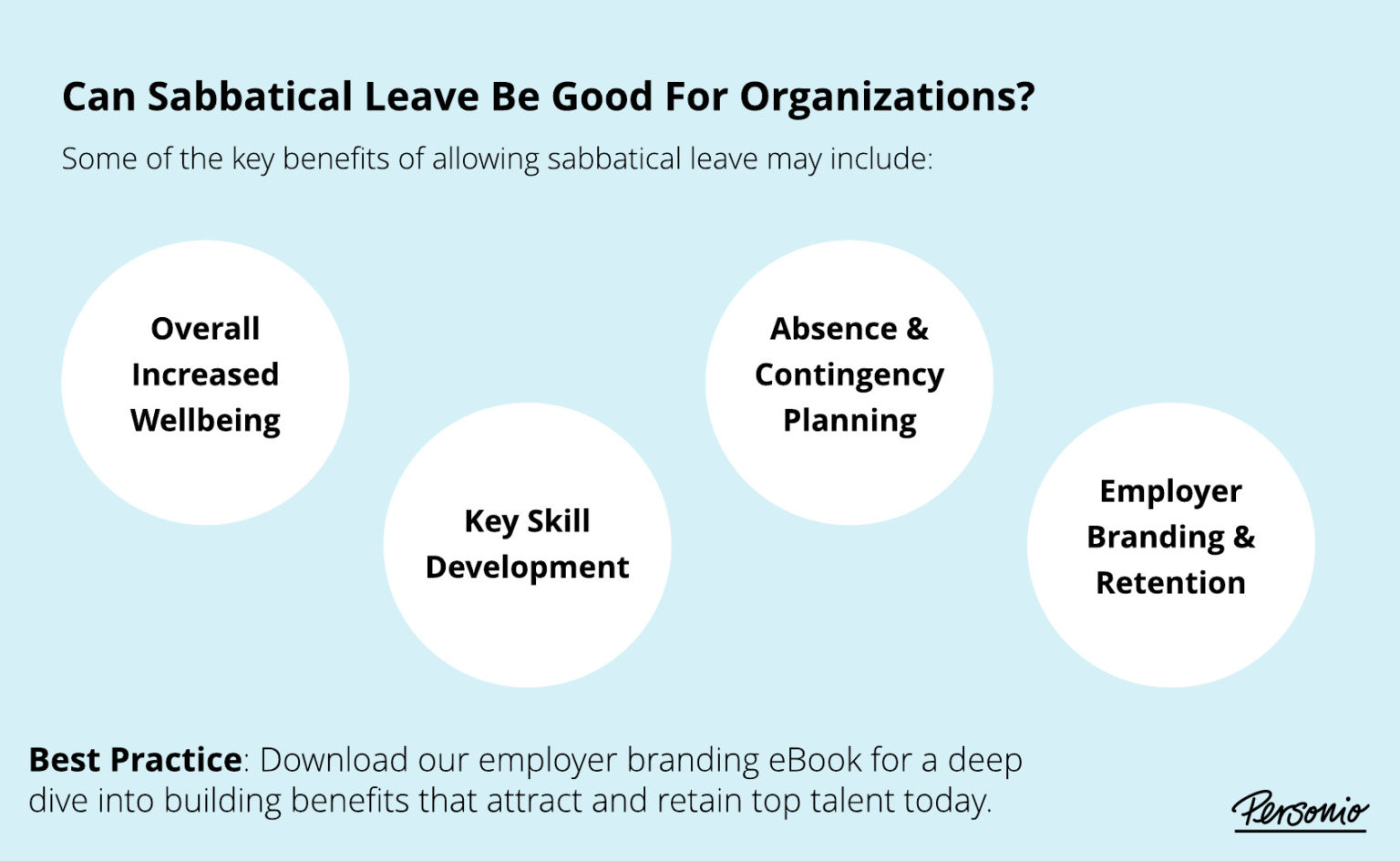
Some of the key benefits of employees in your organization taking sabbatical leave may include:
Benefit | Explanation |
|---|---|
Overall Increased Wellbeing | Taking a sabbatical may result in less stress and overall increased employee wellbeing and satisfaction at work. |
Key Skill Development | When employees take sabbatical leave, they can use it to develop skills which may help them in their role in the future. |
Absence & Contingency Planning | An employee on sabbatical leave gives your organization a chance to prove future leaders or plan for long-term absences in new ways. |
Employer Branding & Talent Attraction | Sabbaticals as a benefit for working at your organization can attract new talent and boost your employer brand massively. |
Ultimately, allowing employees time off work to pursue career-enhancing projects or goals can bring enormous business benefits when an employee returns to work invigorated, refreshed, and full of new ideas.
If you’re a company interested in promoting sabbaticals or offering sabbatical leave to your employees, it might be helpful to think about what employees can do with that time off.
Here are some quick sabbatical ideas for your workforce:
Volunteer – Encourage employees to volunteer their time for a cause they care about.
Create something – A novel, a work of art, anything that gets the creative juices flowing!
Travel – See the world, enjoy some new experiences, and come back better for it!
Educate – A diploma, certificate, or something that helps expand your mind (doesn’t have to be work-related)
Download our Employer Branding eBook for your organization today.
Every Absence Across Your Org
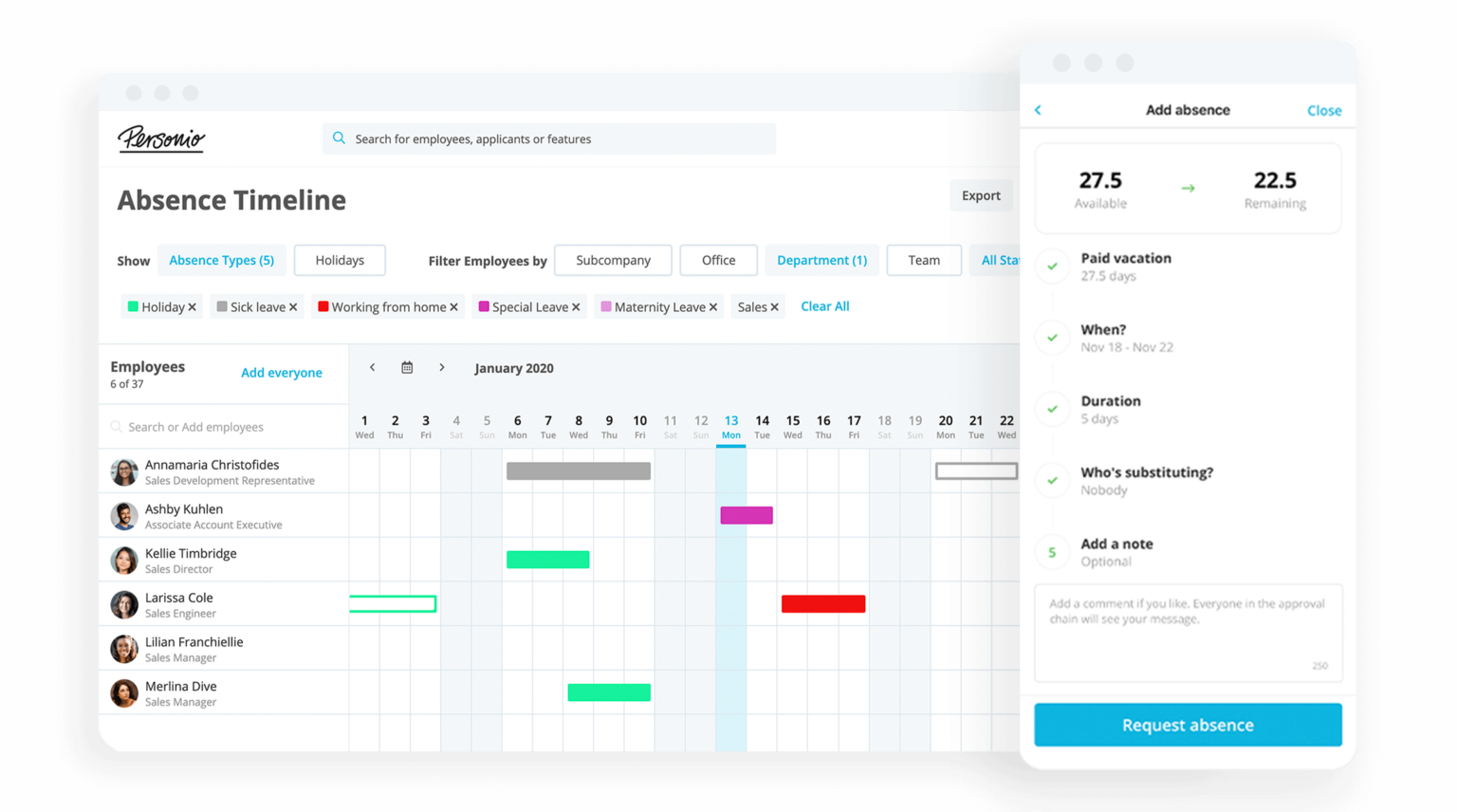
To learn more about managing absences with Personio, click the button below.
Keeping Track Of Absences EasilyWhat Does UK Law Say About Sabbaticals?
In the UK, there are no laws that specifically deal with sabbatical leave. In short, it is only an agreement between the employer and the employee. However, if they do, this must be documented.
As per the Government website on the matter: "Employees can make arrangements to return to work after a career break but these agreements are not legally binding and it could mean ending the existing contract of employment.”
Can Sabbatical Leave Be Paid?
In some cases, yes. In 2018, a study from the Society of Human Resource Management (SHRM) stated that 15% of employers were offering sabbaticals. That said, only 5% of them were paid. While few and far between, they do exist and are typically dependent upon a set number of years within the company.
5 Steps Organizations Should Take Before Allowing Sabbatical Leave
Let’s say that your organization is now ready to start offering sabbatical leave, to benefit from all the reasons listed above. Where might you begin? Here’s a quick breakdown:
Let’s break down each step a bit further:
Decide How Long – Should your organization offer minimum or maximum timeframes for sabbaticals, as a rule, or treat it on more of a case-by-case basis, per employee?
Eligibility – What would make an employee eligible for a sabbatical? A number of years worked? Would they accrue during their time with a company? Would it be confined to certain roles?
Terms & Conditions – What applies during a sabbatical? What are the rules? Is it going to be paid or unpaid, and would anything be expected of an employee upon their return?
Entitlements – If an employee goes on sabbatical leave, what happens to their holiday entitlement? Details like these are important to hash out early on.
Avoid Bias – Make sure that your policy is not biased or does not invite bias in any way. Keep the rules clear, keep them clean, and make sure all employees know about them in a transparent way.
How Do You Create A Sabbatical Leave Policy?
Here’s the important part: Taking all of the steps we covered above, you’re going to want to put a proper sabbatical leave policy in place. That means putting all of your considerations, eligibility requirements, and any special inclusions in place and disseminating them to the company at large.
The policy, in plain English, should include:
The Purpose – Why you are offering sabbatical leave in the first place.
The Qualifying Criteria – Who is eligible to take a sabbatical in your company.
The Process – What someone might need to do in order to take sabbatical leave.
Important Notes – Anything else relevant to sabbatical leave that you want employees to know.
Create A Sabbatical Leave Policy Today
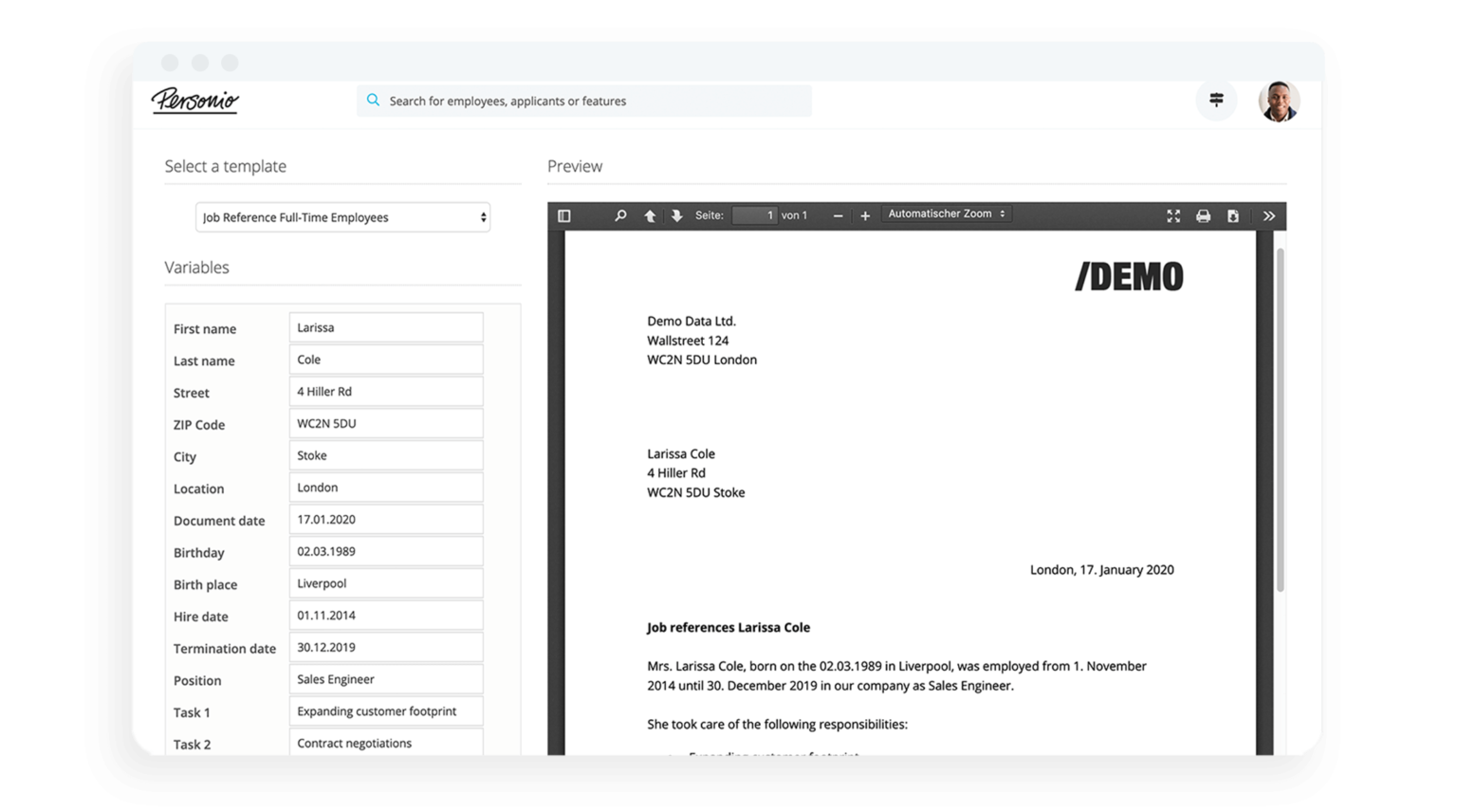
Personio offers a library of both standard and custom templates that you can use.
Manage Policies With PersonioSabbatical Leave: Additional Terms
Just so that we’re all on the same page, let’s cover some of the other terms that come up when sabbatical leave is the question of the day:
What Is A Career Break?
A career break is an agreed-upon amount of time off from work. As opposed to a sabbatical, it is a more popular corporate term — whereas sabbatical has a more academic resonance. In some cases, too, a career break may be shorter (a month rather than a period of months).
What Is A Sabbatical Year?
As the term implies, a sabbatical year is a year-long break from work. This is where the term itself becomes a bit more academic, as ‘sabbatical years’ mostly apply to college professors who take a year off from teaching and use it for study.
